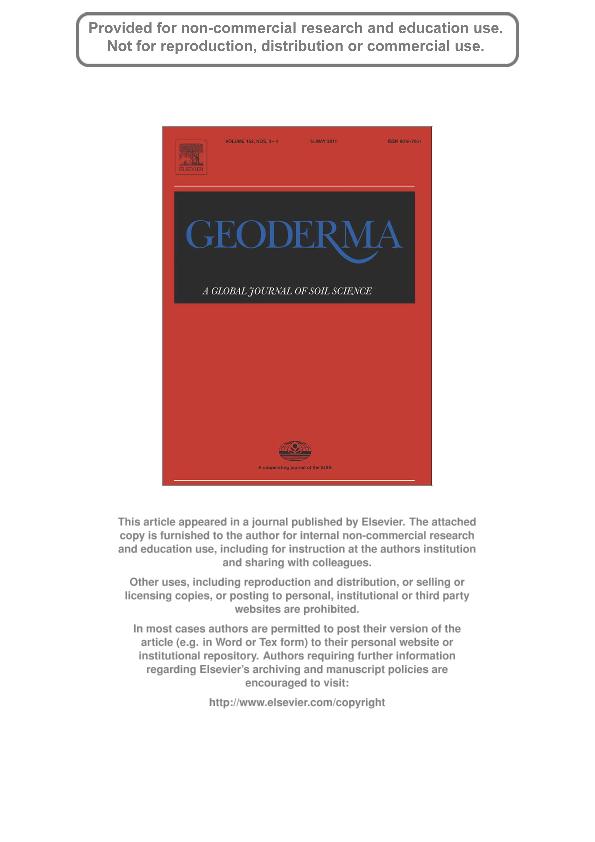Artículo
Soil enzyme and microbial activities in a grazing ecosystem of Patagonian Monte, Argentina
Fecha de publicación:
05/2011
Editorial:
Elsevier Science
Revista:
Geoderma
ISSN:
0016-7061
Idioma:
Inglés
Tipo de recurso:
Artículo publicado
Clasificación temática:
Resumen
Grazers exert important effects on the plant-soil system influencing the structure and functioning of the ecosystems. The effect of grazing on soil enzyme and microbial activities in arid ecosystems of the Patagonian Monte (Argentina) was studied by assessing the cover of plant life forms (grasses, shrubs and dwarf shrubs) at five modal plant-covered patches at three sites across a grazing gradient. We hypothesized that grazing mostly affects negatively soil enzyme and microbial activities through its effect on vegetation and on soil chemical and physical parameters. Soil cores were extracted from plant-covered patches and associated inter-canopy areas and analyzed the chemical (organic-C, total-N and pH), physical (bulk density), microbial (microbial biomass-C, and heterotrophic microorganism counts), and enzyme (dehydrogenase, ß-glucosidase, protease, alkaline and acid phosphatase and the geometric media for these activities) soil properties. Grass and dwarf shrub covers declined, and soil pH and bulk density increased with increasing grazing intensity at plant patches and inter-canopy areas. Soil organic-C and soil-N decreased at plant patches and, were positively correlated to grass cover. Soil organic-C was also positively correlated with ß-glucosidases and phosphatases, indicating that a reduction in soil organic-C could be associated with low enzyme activity and consequently with low soil organic matter turnover and nutrient release. Negative effects of grazing on enzyme activities were also detected on protease activity at inter-canopy areas and geometric media of the enzyme activities at plant patches. Increasing grazing intensity was associated with increasing values of microbial biomass-C and heterotrophic microorganism counts mostly at inter-canopy areas, suggesting that inputs of labile N by urine and dung may partially counteract the negative grazing effects. We concluded that grazing mostly affected soil physicochemical and biological parameters through direct and indirect effects of trampling and urine and changes in perennial grass cover, respectively.
Palabras clave:
ARID ECOSYSTEMS
,
GRAZING IMPACT
,
SOIL ENZYMES
,
SOIL MICROBIAL ACTIVITY
Archivos asociados
Licencia
Identificadores
Colecciones
Articulos(CCT-CENPAT)
Articulos de CTRO.CIENTIFICO TECNOL.CONICET - CENPAT
Articulos de CTRO.CIENTIFICO TECNOL.CONICET - CENPAT
Citación
Prieto, Luciano Hernan; Bertiller, Monica Beatriz; Carrera, Analía Lorena; Olivera, Nelda Lila; Soil enzyme and microbial activities in a grazing ecosystem of Patagonian Monte, Argentina; Elsevier Science; Geoderma; 162; 3-4; 5-2011; 281-287
Compartir
Altmétricas




